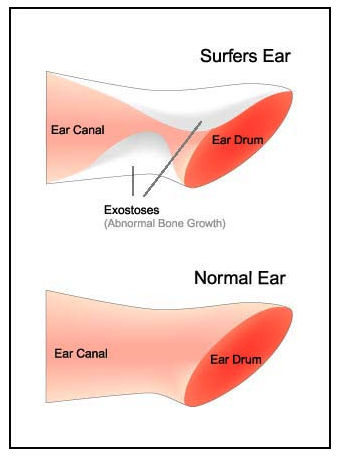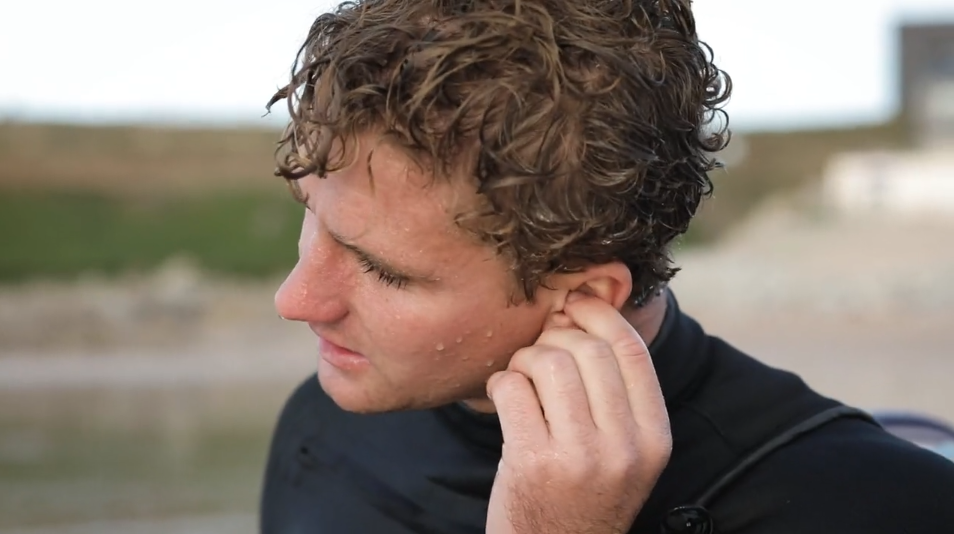Surfer’s Ear
Surfer’s ear is a condition that develops over time when abnormal bone growth occurs in one or both ears after repeated exposure to cold water and wind. Since those contributing factors are common to surfers, the condition has become known as “Surfer’s Ear.” The actual medical term for this condition is transcanal exostosis.
Without medical treatment, transcanal exostosis will remain, along with the unpleasant, recurring symptoms and side effects.
Ear, nose and throat specialist and head and neck surgeon W. Wallace Webster, MD in Coos Bay, Oregon is one of a very few surgeons with special training, extensive experience and great outcomes in the treatment of Surfer’s Ear using the micro-chisel technique.
(Surfer’s ear is not the same and should not be confused with “swimmer’s ear.” Swimmer’s ear is an infection of the outer ear canal as a result of water remaining in the ear after swimming. Surfer’s ear is a bone growth affecting the middle ear canal.)
Causes and Symptoms
Surfer’s ear consists of lumps of bony growth in the ear canal that are caused by repeated irritation from cold water and wind. This condition can, and often does, occur in both ears, but may be worse in one ear than the other.
Over time, these bone growths cause constriction and thickening in the area that can trap water in the ear canal, leading to painful middle ear infections and, in more severe cases, hearing loss. Because the growth rate is slow, these lumps take years to develop, which is why most surfers who suffer with this condition are in their mid-30s and why most people don’t notice a problem until the symptoms are more serious.
Problems
One problem associated with surfer’s ear is a middle ear infection. When the ear canal gets blocked, bacteria can grow in the water that is trapped in the ear canal and that leads to recurring, persistent middle ear infections.
Another problem is conductive hearing loss. Sound must travel from the outer ear to the middle and inner ear, but with the constriction caused by abnormal bone growth, sound is blocked. This results in a temporary type of hearing loss.
Treatment
In the past, this only surgical technique to remove transcanal exostoses was to create an incision behind the ear and remove the growth with a small drill. More recently, a new method was developed in which a micro chisel is inserted inside the ear canal to remove the bony growth. This newer technique, known as micro-chisel exostectomy, requires no surgical incision and allows for quick recovery, but because it is a delicate procedure, only surgeons with special training in this technique should be considered to perform it.
Dr. Webster was personally trained in this technique by its inventor and has conducted multiple, safe and effective exostectomies using this technique.
Ear drops or oral pain relievers are usually all that is needed for any post-surgical pain or discomfort. Antibiotics are commonly prescribed to prevent infection. Most of Dr. Webster’s patients can be back in the water and surfing again within 10-14 days after the procedure.
Most patients have no further problem after exostosis surgery, but new growths can develop with exposure to cold water and air, so Dr. Webster recommends wearing over-the-counter, custom-fit ear plugs to prevent exostosis from recurring.
Dr. Webster performs transcanal exostectomy in his office as an outpatient, same day procedure and it’s covered by most health insurance.
Call our Coos Bay office at 541-808-3860 to make an appointment with Dr. Webster for an exam, diagnosis and treatment of Surfer’s Ear.


